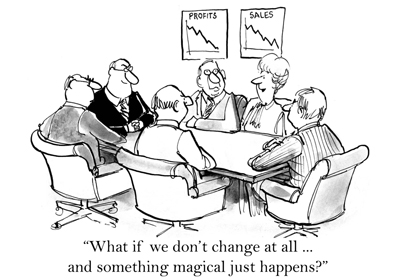In this blog we talk a lot about culture, change and mindsets. So are we saying that if you want to produce effective change in your team or organisation, all you need to pay attention to is the attitudes, values and beliefs of yourself and the people you work with?
Not at all.
There are two clear groups of factors to take into account if you want to make change stick and produce outstanding results quickly, efficiently and permanently: the ‘internal’, and the ’external’. And there’s a sensitive balance to strike when you consider which to pay attention to at any given time.
The internal factors
‘Internal’ factors include people’s mindsets, attitudes, values, perceptions, feelings and beliefs that dictate how people think individually and in groups. These ‘internal’ factors colour how people react to change in the world about them, including the organisation they work in.
The external factors
‘External‘ refers to what the organisation needs to change. These are the concrete, tangible structures, processes and systems that are needed in an organisation of any size to make it work effectively. Examples include organisation structures, salary schemes, IT systems, and business processes.
In our experience, one of two things happens when most leaders think about developing their organisation. The first is that the instinctive reaction is to focus on the ‘external’ factors – after all, these are generally tangible and concrete and capable of development using the skills many leaders have in abundance: planning, directing, implementing and analysing.
Making visible efforts at change also demonstrates to their managers that ‘real’ change is happening. So we see over and over again new leaders, filled with the excitement of their new appointment, restructuring their team; or firing somebody and hiring in a person they knew in their previous job; or scrapping a system that has been used more or less effectively for some time, and installing the very latest thing they have read about.
The second thing that happens is that a leader recognises that the organisation is adequately equipped for the moment with the ‘external’ factors, and that the focus needs to move to bringing the hearts and minds of the people along with the changes. But they try to work on these ‘internal’ factors using the same skills: information, analysis and presentation, where actually it takes different skills: listening, inspiring, communicating and teaching. So often they find the whole thing too difficult – fraught with the possibility of disagreement or conflict – and retire quickly and with relief to restructuring and reengineering!
Making change stick
And this is the point: ‘internal’ and ‘external’ factors need to be focused on equally over time. If, as a leader, you do not attend to both, and manage them with equal rigour, your change efforts will fail. To produce effective change in your organisation requires that you develop your awareness and skill equally in both areas.
However perfect for your organisation’s current and future needs the process you design and install seems to be, if it fails to get buy-in, or even alienates people, the change will fail to deliver!
[callout title=”Where do you focus when making changes?” button=”Here’s how” link=”/services/organisation-development/” buttoncolor=”white, yellow, orange, red, blue, green, gray, black, alternative-1, alternative-2, alternative-3″ target=”_blank or _self”]Develop a strategy to draw people’s commitment[/callout]
